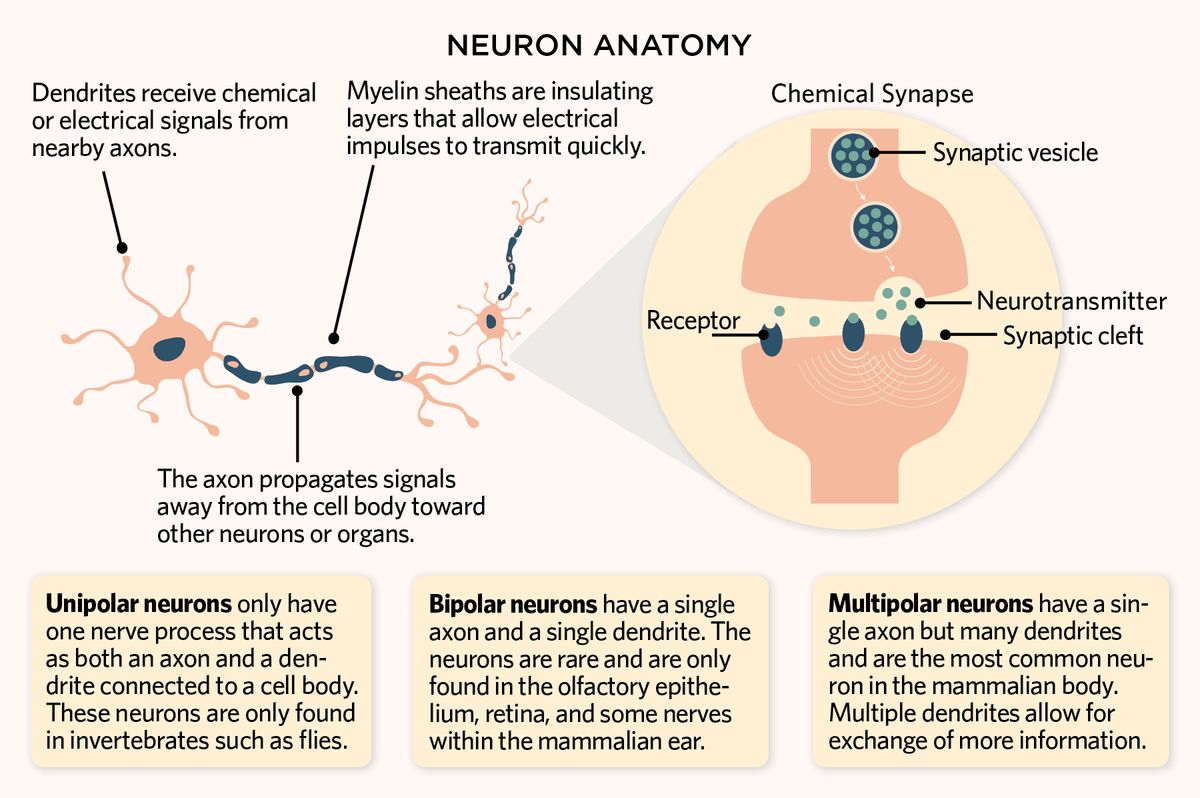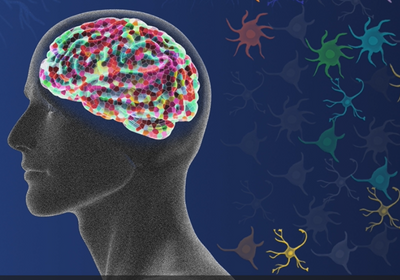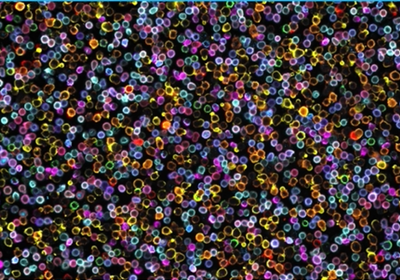Stay up to date on the latest science with Brush Up Summaries.
Nerve cells, or neurons, are the basic functional units of the nervous system. Multiple interconnected neurons form a neural circuit and use electrical and chemical signals to quickly transmit information throughout an organism. The nervous system is broadly divided into two sections: the central nervous system (CNS) and the peripheral nervous system (PNS). The CNS consists of the brain and spinal cord whereas the PNS includes neurons that branch off from the CNS and connect to the rest of the body. In general, neurons in the PNS receive and carry signals in the body while neurons in the CNS analyze information.
Types of Neurons
Sensory neurons
The cell bodies of sensory neurons are located in the dorsal root ganglia—cell body clusters just outside the spinal cord—whereas their peripheral extensions travel throughout the body. Specifically, sensory neurons are activated by a sensory input via specific external and internal receptors. External receptors respond to stimuli outside of the body and include olfactory receptors, taste receptors, photoreceptors, cochlear hair receptors, thermoreceptors, and mechanoreceptors. Internal receptors respond to changes inside the body. For example, they can detect changes in the blood’s chemical properties or respond to potentially damaging stimuli by causing the perception of pain.1
Motor Neurons
A motor neuron’s cell body is also often located either in the spinal cord or the brainstem with projections that interact with organs such as muscles and glands. Upper motor neurons generally begin in the brain’s motor cortex and interact with spinal interneurons to initiate the neural circuits that generate movement. Lower motor neurons originate in the spinal cord and directly or indirectly control voluntary movement of certain targets such as muscles, eyes, the face, and tongue.1
Interneurons
Interneurons, also known as relay neurons, connect multiple regions of the nervous system. Interneurons are the central nodes of neural circuits and allow for communication between sensory neurons, motor neurons, and the CNS. This category comprises the largest variety of neurons, which are involved in processing many different types of information, such as reflexes, learning, and decision-making. Interneurons are located exclusively in the brain and spinal cord.1
Neuron Anatomy
Neurons are composed of a cell body containing the nucleus, dendrites that receive chemical, electrical, or other signals via receptors or through gap junctions (direct connections between two membranes), axons that propagate action potentials (see below) triggered by signals from dendrites, and myelin sheaths surrounding the axon that accelerate action potential propagation.
Neurons can also be categorized by their basic structure. Unipolar neurons have one nerve process that acts as both an axon and a dendrite whereas bipolar neurons have both a single axon and a single dendrite. Multipolar neurons have a single axon and multiple dendrites. They are the most common neuron found in mammalian bodies.

Neuron Function
Synapses
Neural synapses are junctions between neurons that permit neural communication. Synapses come in two different forms: chemical and electrical.2
Chemical synapses communicate by releasing neurotransmitters—signaling molecules that are stored and released from neurons via synaptic vesicles in response to action potentials and voltage-gated calcium channels. Once they traverse the gap between neurons (synaptic cleft), neurotransmitters interact with excitatory or inhibitory receptors on the receiving cell to generate excitatory or inhibitory signals. Researchers have identified more than 100 types of neurotransmitters—the most common include glutamate, acetylcholine, glycine, norepinephrine, serotonin, dopamine, and gamma-aminobutyric acid (GABA).3
Electrical synapses are less common than chemical synapses and are mainly found in the CNS. The synaptic cleft in an electrical synapse is much smaller, making it possible for neurons to pass ion currents directly through gap junctions. For this reason, electrical synapses work faster than chemical ones and allow for impulses to travel in either direction within the neuron. However, because they don’t use neurotransmitters, electrical synapses are less modifiable than chemical ones.4
.jpg alt=)
Action potentials
Typically, neurons share information by producing electrical events called action potentials, also known as nerve impulses, which involve rapid changes in voltage across their membrane. When a neuron’s dendrite or cell body receives enough inputs from other neurons via chemical or electrical synapses and a particular threshold for that neuron is exceeded, the neuron is triggered to send an action potential across its axon. Overall, action potentials are all-or-nothing signals because their response is usually the same amplitude and duration. The strength and duration of a stimulus determines the frequency of the action potentials produced. The stronger a stimulus and the longer it lasts, the greater the action potential frequency, which results in more information being passed along the neural circuit. For example, a louder sound stimulus will activate a greater number of action potentials.5,6
An action potential goes through three phases following a triggering event: depolarization, repolarization, and hyperpolarization. In the resting state, when it is not sending a signal, a neuron’s membrane is polarized, with the inside of the cell being more negatively charged than the outside (negative membrane potential). There is a greater sodium ion concentration outside of the cell and a greater potassium ion concentration inside the cell. Opening and closing ion channels changes the membrane potential. When the neuron is triggered, it activates voltage-gated sodium channels at the beginning of the axon. This causes an influx of positive sodium ions into the cell, raising the voltage and depolarizing the membrane. As the voltage increases along the axon, additional sodium channels open, propagating the signal. The myelin sheath made of protein and fatty substances surrounds the axons of certain nerve cells and acts as an insulator, allowing actional potentials to move more quickly down the axon. Repolarization occurs once the membrane potential reaches a certain positive voltage. At this point, sodium channels close and potassium channels open, allowing for the efflux of positive potassium ions and, therefore, a return to a negative membrane resting state. Finally, during hyperpolarization, as positive potassium ions continue to leave the cell, the neuron’s membrane potential becomes more negative than the resting state. This is the refractory state, which limits how often action potentials can be regenerated while also ensuring they move in only one direction along the axon. Following this, the potassium channels eventually close and allow the neuron to return to the resting membrane potential.5,6
Neurons and disease
Neurodegeneration
Neurodegenerative disease is complex, and almost any component of neuronal function can be involved in the neurodegenerative process, including dysfunction of synapses or neural circuits as well as the destruction of myelin. Multiple sclerosis, Alzheimer’s disease, Parkinson’s disease, prion disease, Huntington’s disease, spinal muscular atrophy, and spinocerebellar ataxia are among the most common neurodegenerative diseases. These disorders affect millions of people worldwide and lead to a decline in the ability to perform basic and complex tasks including speech, movement and cognition.7
Motor neuron diseases are a form of neurodegeneration that is specific to the neurons that control muscle activities, such as speaking, walking, breathing, and swallowing. Common motor neuron diseases include amyotrophic lateral sclerosis (ALS), progressive bulbar palsy, primary lateral sclerosis, and progressive muscular atrophy. Disruptions in motor neuron functions can cause gradual muscle weakening or twitching that eventually lead to the inability to control voluntary movements.7
Other Neuron-Based Disorders
Neuronal disorders can come in additional forms. Genetic and environmental triggers can cause abnormal neural development, leading to disorders such as Down Syndrome, fragile X syndrome (FXS), Rett syndrome, and autism. Cancers at any stage during development or adulthood can also develop within neural tissues as well as in the surrounding tissue, resulting in general brain dysfunction, including seizures, muscle weakness, visual field defects, or sudden changes in personality. Finally, a number of pathogens can infect neurons or affect them with their toxins, including Clostridium botulinum (botulism toxin), Clostridium tetani (tetanus toxin), poliovirus, and rabies virus.8
Mood disorders
The major types of mood disorders include major depression, dysthymia (dysthymic disorder), bipolar disorder, mood disorder as a consequence of a medical condition, and substance-induced mood disorder. While much is unknown concerning neuron function and mood disorders, researchers have found that depressive illnesses are associated with region-specific neural loss and the retraction of dendrites, which leads to changes in synaptic activity. These result in neurotransmitter imbalances that are specifically involved in reward, mood, and emotion.9
References
- M.A. Brehm et al., “Humanized mouse models to study human diseases,” Curr Opin Endocrinol Diabetes Obes, 17:120-25, 2010.
- M. Arrieta et al., “Human microbiota-associated mice: A model with challenges,” Cell Host Microbe, 19:575-78, 2016.
- S. Fujiwara, “Humanized mice: A brief overview on their diverse applications in biomedical research,” J Cell Physiol, 233:2889-901, 2018.
- P.K. Dash et al., “Humanized mice for infectious and neurodegenerative disorders,” Retrovirology, 18:1-17, 2021.
- R.W. Körner et al., “Of mice and men: The coronavirus MHV and mouse models as a translational approach to understand SARS-CoV-2,” Viruses, 12:1-26, 2020.
- E. Axton, D. Tanamachi, “Important considerations for generating genetic humanized mouse models,” JAX Blog, August 25, 2021, p. 1-6.
- H. Tian et al., “Humanized rodent models for cancer research,” Front Oncol, 10:1-11, 2020.
- S. Fu et al., “Preclinical humanized mouse model with ectopic ovarian tissues,” Exp Ther Med, 8:742-46, 2014.
- X. Zhao, D. Moore, “Neural stem cells: developmental mechanisms and disease modeling,” Cell Tissue Res, 371:1-6, 2018.
- A. Aartsma-Rus, M. van Putten, “The use of genetically humanized animal models for personalized medicine approaches,” Dis Model Mech, 13:1-6, 2019.






